A secret octopus city is changing how we define smart
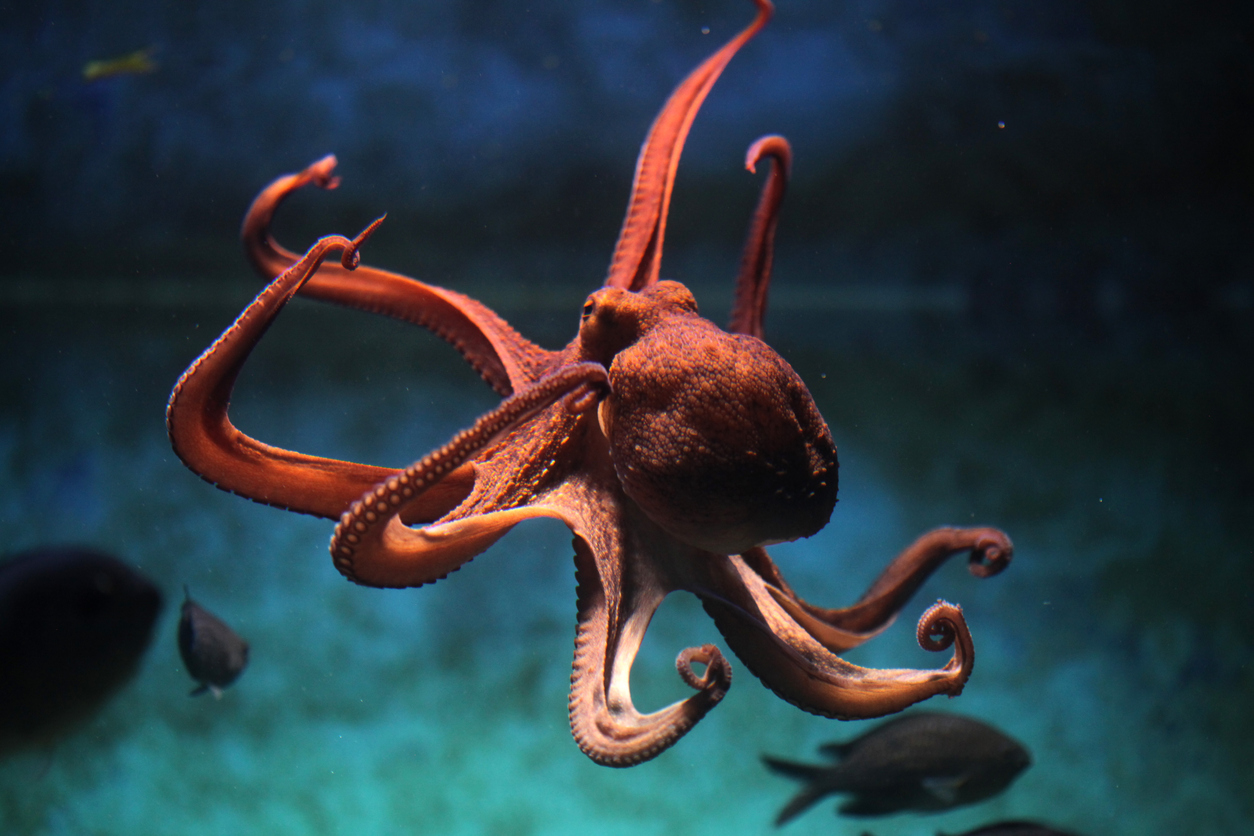
Octopuses have long been seen as mysterious loners, but a strange underwater site off Australia’s coast, nicknamed Octopolis, is changing that view. From hurling shells to decorating their dens, these sea creatures are showing shockingly smart behavior. Here’s what scientists discovered and why it’s challenging everything we thought we knew about animal minds.
1. They Built a City
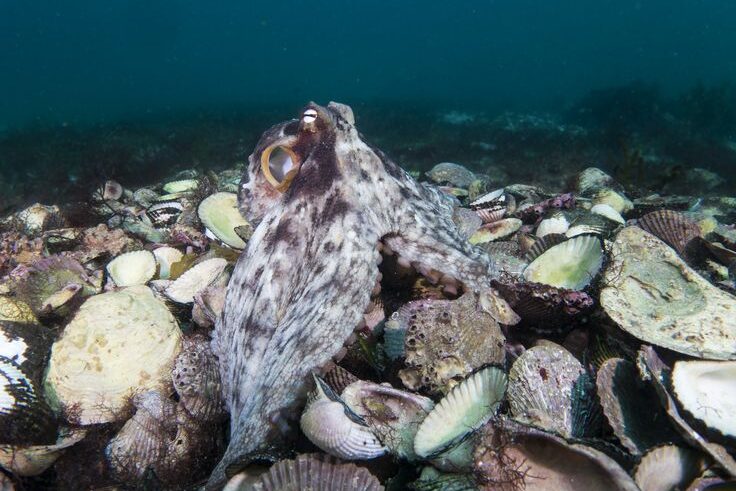
In the shallow waters of Jervis Bay, octopuses gathered shells, rocks, and debris to form a dense cluster of homes. It wasn’t random. The arrangement looked organized, almost like a tiny village. Marine biologist David Scheel explained, “We’ve never seen this kind of settlement before.” The site, now called Octopolis, suggests purposeful design. It’s not just one octopus making a den. It’s many, building side by side, in patterns that hint at planning. For animals once believed to be loners, this changes the story. They’re not just surviving. They’re shaping their environment in ways that feel surprisingly familiar.
2. They Live Side by Side
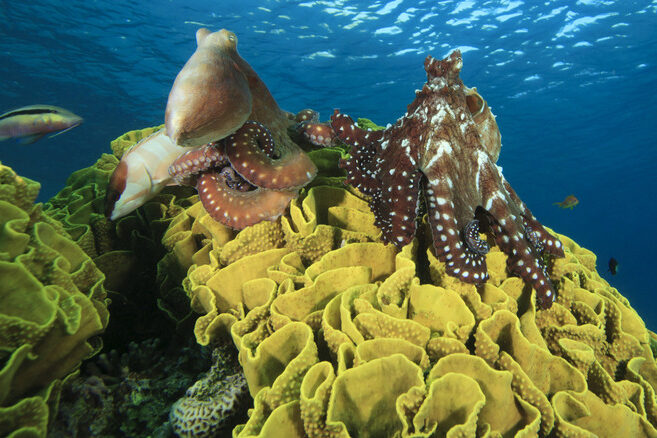
Octopuses have long been seen as solitary creatures, only coming together to mate or fight. But at Octopolis, that idea fell apart. Multiple individuals were observed living closely together, sometimes within arm’s reach. They didn’t always get along, but they made it work. Some ignored each other completely while others interacted with caution. This willingness to share space suggests social flexibility. Scientists started to wonder if octopuses were more tolerant than they thought. When animals choose proximity over isolation, it hints at something deeper than instinct. It shows the possibility of choice and maybe even social understanding.
3. They Steal from Each Other
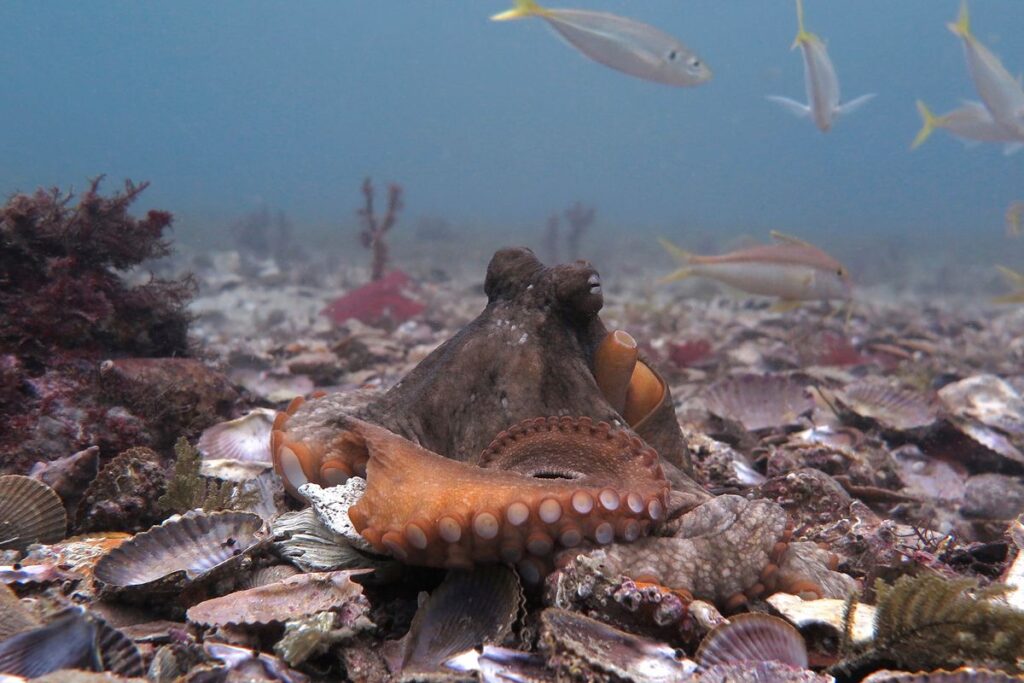
If you’ve ever had something quietly taken from your space, you’re not alone. Octopuses at Octopolis have been filmed sneaking into each other’s dens to steal food, shells, or other materials. It’s not just clever. It’s intentional. Sometimes they get away with it. Other times, it leads to little fights. Marine biologist Peter Godfrey-Smith noted, “They know what they’re doing, and they take chances.” This behavior feels personal. It shows a sense of value and possibly even judgment. Watching them pilfer and react makes you think these sea creatures understand more about fairness than we once believed.
4. They Throw Things on Purpose
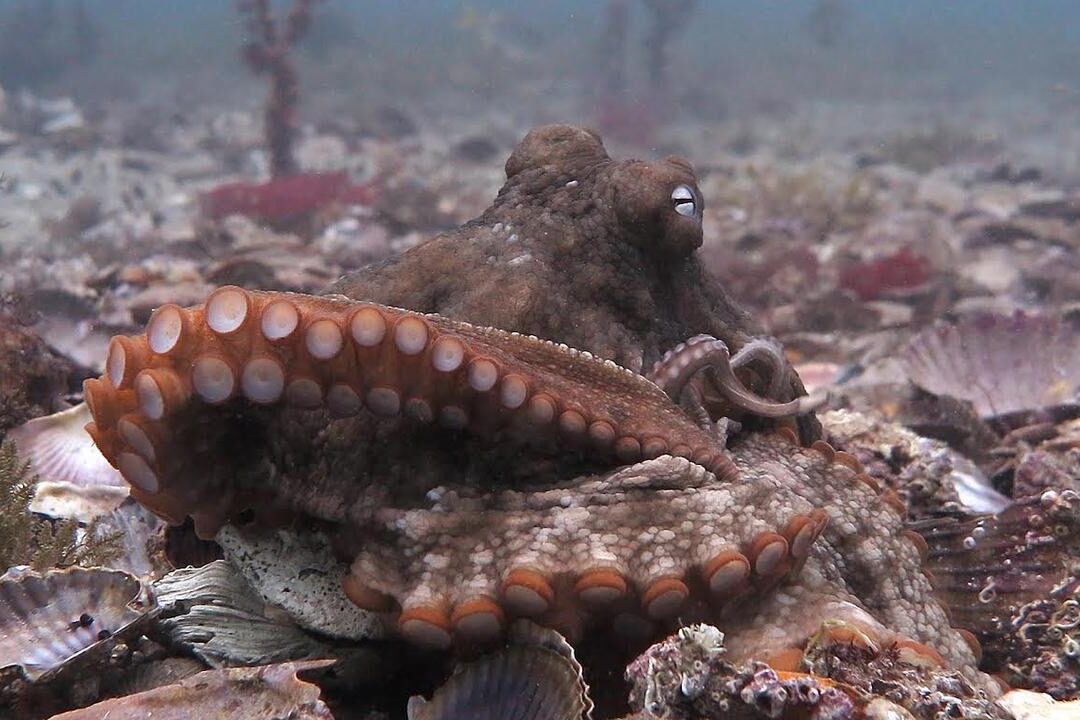
Most sea creatures don’t throw objects at each other, but octopuses aren’t most sea creatures. At Octopolis, scientists recorded individuals gathering shells, silt, and algae, then launching them at nearby octopuses. It didn’t look random. One even adjusted arm position for better aim. Godfrey-Smith commented, “Some of the throws clearly had targets.” It’s a fascinating display of coordination and intent. The behavior might be territorial or a way to settle disputes. Either way, it’s rare. When animals not only use their environment but also weaponize it with purpose, it gives us a whole new lens on intelligence.
5. They Decorate Their Homes
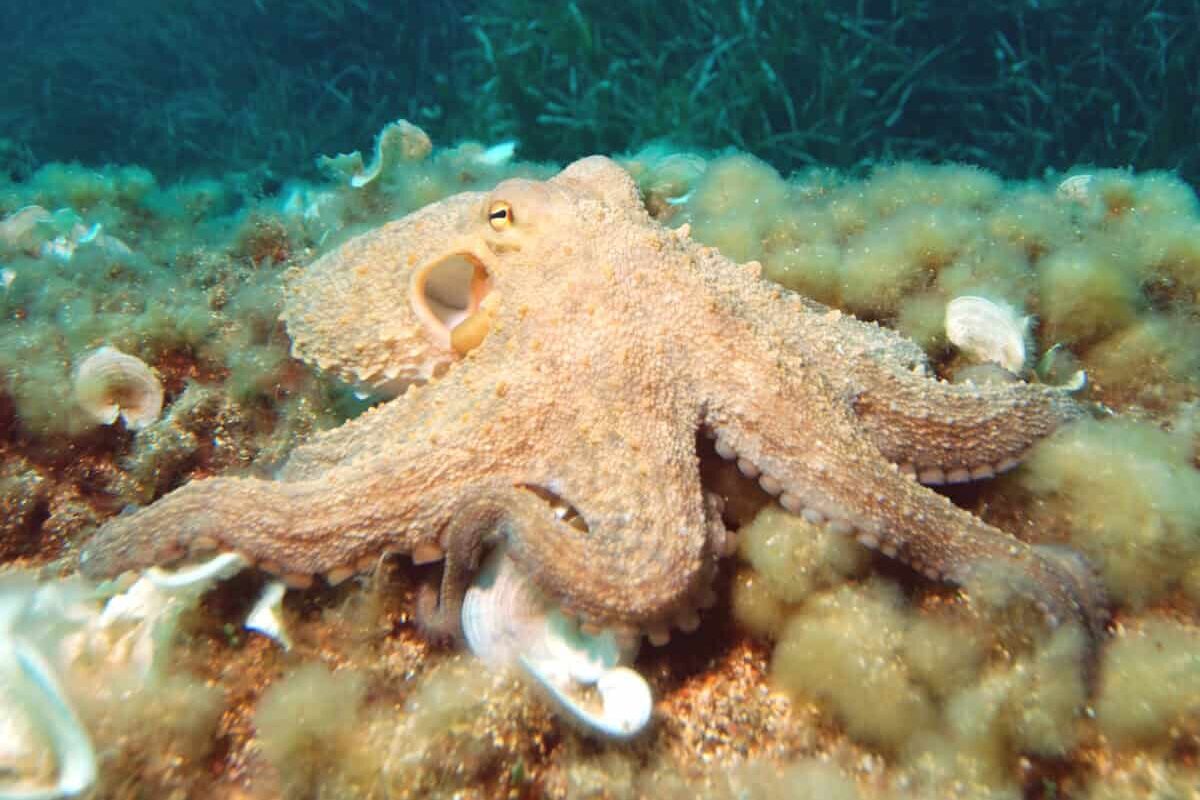
Take a close look at their dens, and you might spot a bit of personality. Octopuses have been seen arranging shells, bottle caps, and stones around their homes in patterns that don’t always serve obvious survival purposes. Some scientists believe it’s for camouflage. Others wonder if it’s simply aesthetic. One octopus even placed objects in a neat circle. It’s hard to say if it’s instinct or intention, but the effort is noticeable. When creatures begin to manipulate their surroundings beyond function, it hints at a mind that sees more than shelter. It suggests they might enjoy creating something of their own.
6. They Flash Color to Communicate
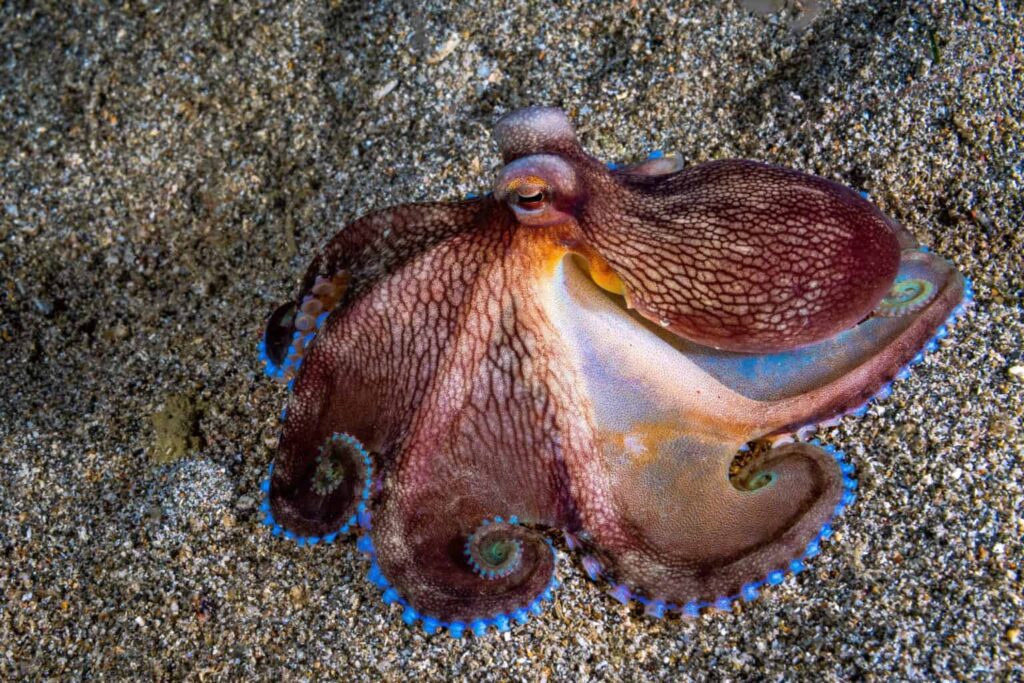
Octopuses wear their feelings on their skin, literally. Their bodies can shift colors instantly thanks to chromatophores, and at Octopolis, researchers noticed those flashes often happen during social interactions. An octopus might darken when angry or display stripes when it wants to assert itself. Dr. Jennifer Mather explained, “These changes can mean different things depending on the situation.” It’s more than camouflage. It’s communication. Without words, they’ve developed a rich visual language. And the speed and variation in those color changes suggest a mind that’s constantly responding to its environment and maybe even trying to influence others around it.
7. They Use Tools Like Pros
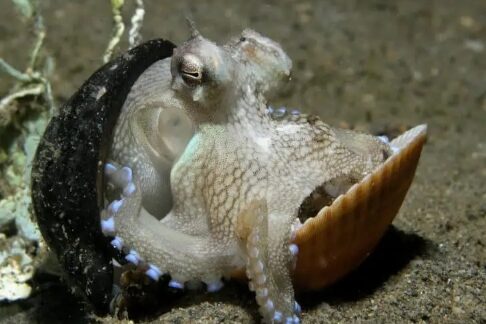
When scientists talk about tool use, they usually mean apes, crows, or dolphins. But octopuses belong on that list too. At Octopolis, they’ve been seen collecting coconut shells to carry as armor or hiding behind bottle pieces like shields. Some even stack rocks at their den entrances as protection. This kind of behavior involves planning, coordination, and purpose. It’s not just reaction. It’s construction. Dr. Julian Finn, who documented coconut-carrying octopuses, called it “a remarkable example of tool use.” For animals with soft bodies and short lifespans, their ability to use objects this way is genuinely impressive.
8. They Learn from Watching
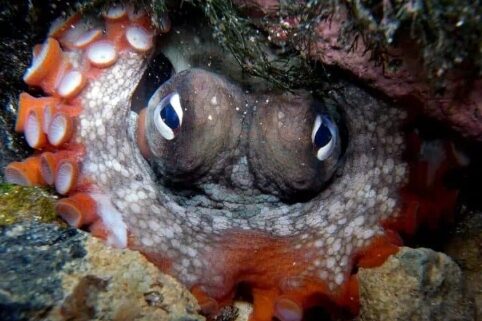
Learning by observation isn’t common in the animal kingdom. It’s mostly tied to smarter species. But octopuses may be part of that group too. In Octopolis, changes in behavior often occur after one octopus watches another solve a problem or react to a threat. A classic 1992 study published in Science found that octopuses learned to open jars faster after watching a peer do it. It’s not just learning from trial and error. It’s learning from each other. That kind of knowledge transfer suggests they’re capable of more than we give them credit for. They’re paying attention and it shows.
9. They Pick Favorites and Enemies
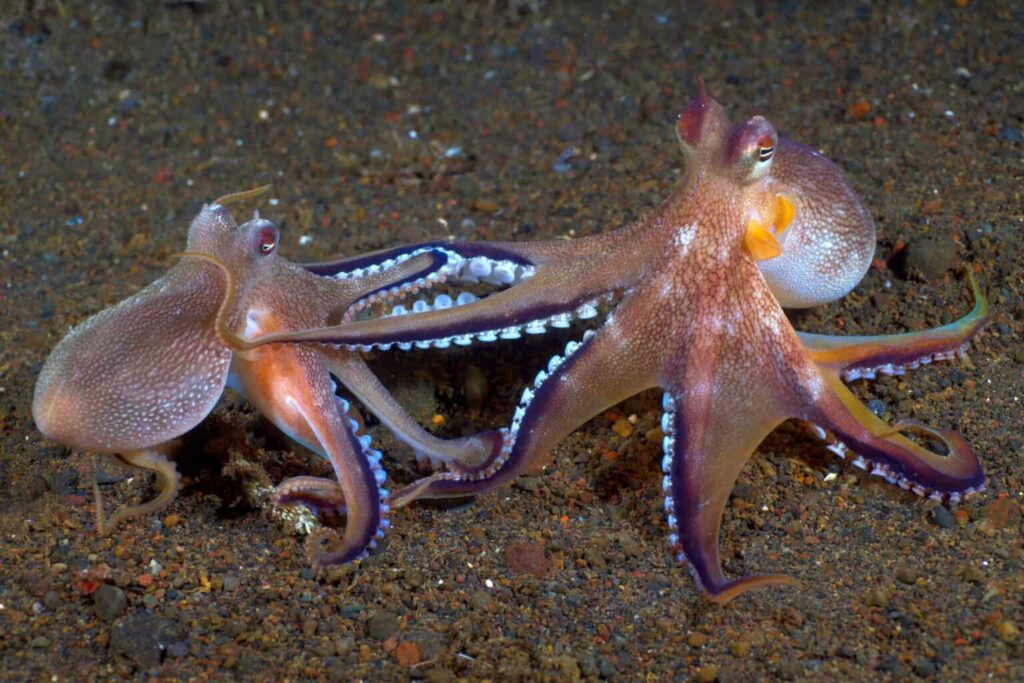
Not every octopus gets along, and some hold grudges. At Octopolis, certain individuals were seen avoiding specific neighbors or repeatedly targeting them with thrown debris. On the flip side, some octopuses tolerated others, sharing space without conflict. Scientists think they recognize each other and form preferences. This ability to distinguish between individuals is rare among invertebrates. It speaks to memory and possibly emotion. When sea creatures start acting like neighbors with favorites and feuds, it’s hard not to imagine there’s more going on beneath the surface. Maybe they’re not just reacting. Maybe they’re choosing who to trust or avoid.
10. They’re Challenging Our Definition of Smart
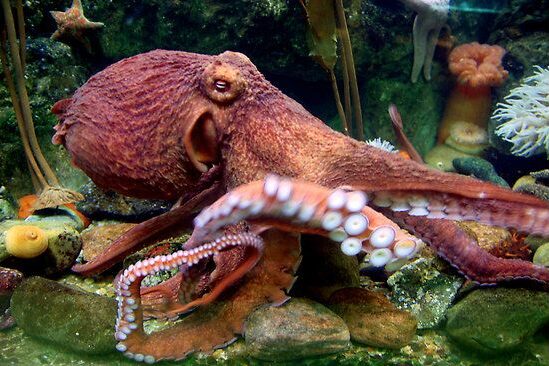
Octopuses don’t think like us. Their brains are spread out, with most neurons in their arms, and yet they show memory, creativity, and adaptability. At Octopolis, every unusual behavior adds another layer to what we consider intelligence. From building communities to throwing tantrums, they force us to ask deeper questions. What does being smart really mean? Is it planning, communicating, or using tools? Or is it all of those things combined in surprising ways? As we watch them build, steal, and solve problems, one thing becomes clear. Maybe we’ve been underestimating the minds swimming just beneath the waves.
This story 10 Strange Octopus Behaviors That Have Scientists Rethinking Animal Intelligence was first published on Daily FETCH


